#Coyote-Hunting Strategies
Explore tagged Tumblr posts
Text
Top Gun Maverick Characters as Animals!
(that either i have personally worked with or people i know have worked with) (with explanations for each choice)
Part 1 with Top Gun (1986) Characters here
Bernie "Hondo" Coleman - Timber Rattlesnake: A very docile species overall, preferring to retreat or hide when faced with a threat. However, when provoked they are capable of delivering a bite with powerful venom (either neurotoxic, hemorrhagic, or a combination of both).


Bradley "Rooster" Bradshaw - Red Fox: Very clever and capable of learning from their experiences, they are also a very playful species that are known to attempt to play with larger animals that could pose a threat to them.


Natasha "Phoenix" Trace - Mongoose Lemur: The females of this species are dominant over the males and they are a relatively peaceful species. They, like most lemurs, are incredibly social and live in groups with small home ranges that often overlap with other groups.


Robert "Bob" Floyd - Meerkat: Cooperative and supportive, they live in large family groups. They appear to be shy, skittish, and quiet, but when they feel safe they are incredibly social and appear to have intricate emotions. (My picture from Frankfurt Zoo in Germany!)


Javy "Coyote" Machado - American Alligator: Incredibly intelligent and capable of learning their name, voices, and commands, they are very misunderstood as being aggressive and dangerous. They are actually very calm and relatively docile animals (my picture from a trip to Florida).


Jake "Hangman" Seresin - Thick-tailed Bushbaby/Greater Galago: While they can be moody and solitary, they are prone to becoming anxious and irritable without consistent interaction with other bushbabies. They also are curious and very intelligent as many primates are.


Reuben "Payback" Fitch - Speckled King Snake: Born resistant to venom, they are one of the few snakes that will prey on venomous snakes including rattlesnakes. However, they are very calm snakes that don't often strike at people.


Mickey "Fanboy" Garcia - American Bison: While they can appear calm and docile, they are very dangerous when provoked. They are very social and thrive in large herds where they are capable of fighting off packs of wolves and other large predators.


Logan "Yale" Lee - Coachwhip: Incredibly fast, these snakes are not aggressive but instead will use their speed to get away from threats moving upwards of 10 mph! Unlike many snakes that rely on venom or constriction for hunting and defense, the coachwhip will hold its prey - or predator - in its mouth and whip their head side to side to tear flesh, and they will use rocks to kill their prey by slamming it into them repeatedly (very cool to watch, not so cool to have happen to your hand <- said from experience).


Brigham "Harvard" Lennox - Takin: Very agile and graceful despite their appearances, these large animals are able to move around their mountainous environment with more ease than almost any others. They are very protective of each other, and are very curious creatures.


Neil "Omaha" Vikander - Antillean Nighthawk: Not much is known about this species, but they are incredibly agile fliers and have been seen flying almost erratically while hunting - including dramatic dives and swoops.


Callie "Halo" Bassett - American Crocodile: The only species of crocodilian known to reproduce through parthenogenesis, making them the largest species known to use that method of reproduction! They are very intelligent and deadly predators that have been known to adapt their strategies if they are unsuccessful in a hunt.


Billy "Fritz" Avalone - Water Deer: A mainly solitary species, and the males are highly territorial. Their large fangs earned them the nickname of "vampire deer" and many people assume they are dangerous or a threat, but they are not carnivorous. Those fangs are instead used for fights with other water deer!

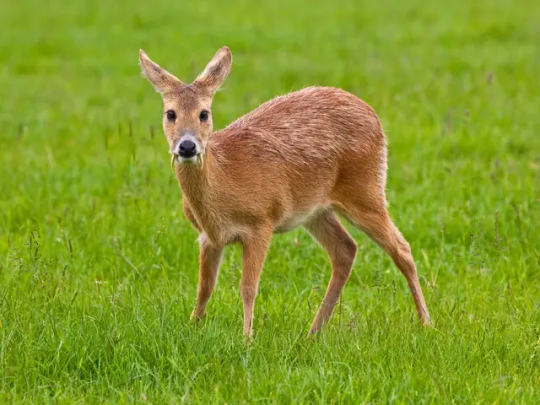
Beau "Cyclone" Simpson - Great White Shark: One of the most intelligent and curious shark species, and one of the most notorious species of the ocean. They are known to use different hunting strategies depending on the prey they are hunting, and they almost always are able to outsmart their prey. However, they are also very peaceful sharks when not hunting, and media commonly misrepresents them as bloodthirsty when they are just trying to survive.


Solomon "Warlock" Bates - Kodiak Bear: Despite being the largest subspecies of brown bears (and the second largest bear alive today with the largest being the polar bear), these bears are among the least aggressive of all brown bears. They will gather in large groups due to the availability of food and have been observed to use "language" and have complex social structures to avoid fights between the usually solitary bears (it's theorized that they even express their feelings to avoid conflict).
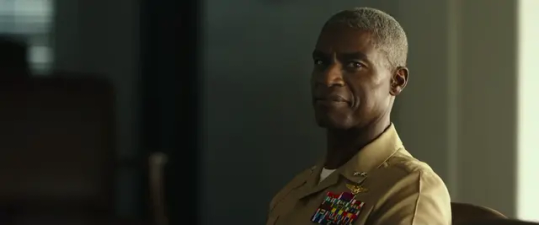
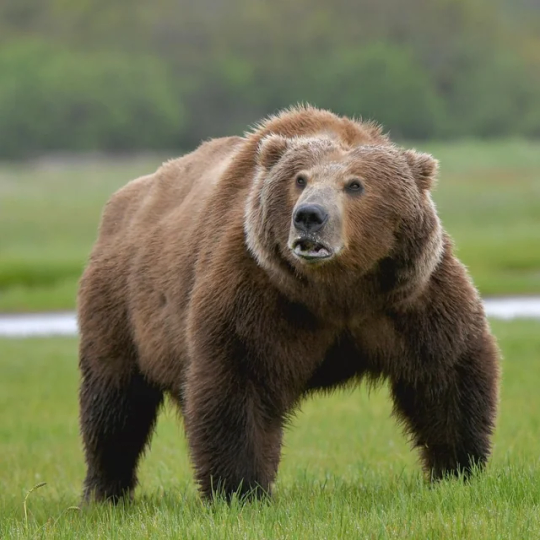
#top gun maverick#top gun#solomon warlock bates#beau cyclone simpson#billy fritz avalone#callie halo bassett#neil omaha vikander#brigham harvard lennox#logan yale lee#mickey fanboy garcia#reuben payback fitch#jake hangman seresin#javy coyote machado#natasha phoenix trace#robert bob floyd#bradley rooster bradshaw#bernie hondo coleman#echos echo chamber
122 notes
·
View notes
Text

Coyotes used to live in the high Asthaom desert, but mysteriously disappeared during the thousand-year drought… And wherever they went, koathi stepped in to fill their absence.
Koathi are gregarious scavengers. They’ve long been considered humankind’s friend, because a wild koath has never attacked or preyed on a human unprovoked. They’re very tolerant of people, sometimes even friendly, but this is in the same way that wild orcas don’t really bother humans because they aren’t taught to consider them food, and puffins have no fear of humans because they haven’t been exposed to predators. Koathi do prey on other denizens of the desert (and they even use persistence hunting strategies the same way that humans do.) Sometimes your relationship with an animal is built on nothing but dumb luck, but I don’t think that makes it any less significant.
Like cheetahs, they are not true big cats, so they don’t roar (but they do meow, and purr, and grunt, and chirp, and make all kinds of other weird noises.) The god Koda fashions herself after them. She just thinks they’re neat and so do I.
Thank-you to vlpn for motivating me to draw these bruisers again!

183 notes
·
View notes
Note
I didn’t see foxes mentioned in the naming post but I noticed that all of them so far have been named after scents. Is that a foxes in general thing or just Ferric’s family?
Technically, the foxes are named after elements (Ferric = Iron), but either way it's just her family. Fox naming rules would align closer with coyote and wolf naming rules.

Defiance has absolutely no stance on being faithful to your partner/s. Honestly, because so many animals have different mating strategies, I don't think many creatures do. Except BarrenClan, of course, and I do think that traditional wolf culture is pretty strict about it. But Defiance is sort of an outlier in everything.

Ash is the one mostly populated by birds, and is used largely as an information network and a more loosely regulated branch - lots of the crows/vultures aren't even a "part" of Defiance, they're more like individual contractors? They don't always live within the camp territory and will do things like spying in exchange for food or territory freedom. Smoke and Fire are both pretty similar in comparison. Smoke is the one headed by Spike, and consists moreso of the larger "predator" types and does more fighting and killing. Fire's the one headed by Prowl, and Ranger and Hacksaw, and does more of the hunting and scouting.
112 notes
·
View notes
Note
talk about your au ^_^
OKAY BASICALLY.
dedsafio except everyone is a hybrid of some sort, and it plays heavily into animalistic instincts and impulses.
seven helped me figure out different members and what animal they'd be (<- not complete mafia bc some of them i just don't have a good read on, mostly because they don't interact with sapnap that much yk), and it goes as follows:
farfadox: doberman, spreen: spectacled bear, goncho: polar bear, shadoune: red fox, serpias: iberian lynx, cris: pit viper, amilcar: argentinian black & white tegu, diffrent: yacare caiman, piru: coyote, conter: mexican cottontail, sapnap: desert cottontail
pretty much all of them are that animal for some reason or another, but i can talk about that another time. and it is intentional that everyone except sapnap and conter are predator animals.
the original brainrot for this au was centered around manhunt, where team mafia have a day set aside every so often to hunt sapnap. at first, it starts as an individual competition, where the first person to catch sapnap wins him for a day. the idea was that sapnap, who has a lot of experience in manhunt, even if it was all as a hunter and not a runner, is much better than team mafia are expecting. they knew he'd be good, they know how competent and smart he is after participating in other competitions with him, but he completely exceeds expectations. he's always two steps ahead, knowing exactly what they'd think as hunters, slipping from their grasp as easily as breathing. by the end of the day, they come together and decide to surrender. they've been chasing sapnap for hours, and they're exhausted, deciding to cut their losess and try again when they're better prepared. the next time they hunt, they're more prepared, and they've planned their own strategies. long story short, they still don't catch sapnap. it's a lot closer this time, they have more genuine encounters with sapnap, where he's not just letting them find him out of boredom. but they still end up surrendering. the third time they hunt, some of them start forming alliances, making deals amongst themselves, trading resources and favors and promising to share sapnap if they win together. and ofc when they finally do catch sapnap, after having to create teams of multiple people to even stand a chance, sapnap would still laugh his ass off at the fact that the only way they could catch him is to outnumber him
there's also a whole nsft side of this au but there's also so much we've thought of so far that isn't. like this au is just the gift that keeps on giving. atp it's been about a month since seven and i originally had this idea and it has snowballed SO MUCH since then like our discord server (literally just cheaze, seven, and i) brainrot channel is chock full of this au.
i stg i could go on and on for hours about this au, like this is literally the earliest rendition of it, the original idea that sparked Everything, this is what we had before we even thought of making it a hybrid au
anyway u guys should ask me more questions about this nodders (please) (i wanna yap about this au so badly)
13 notes
·
View notes
Text
Animal language
(Ramble)
More so a thought than anything else but I find it super cool that depending on biomes certian language aspects in animals is carried over cross species as a survival strategy or hunting method. How cats mimic bird chirping or butterflies have eye spots on their wings. Both are very good at taking language from one species to another. It also in some way explains what fears other animals may have or what they love the most by another species picking up on that.
Possums playing dead is fascinating to me as its just confusing enough for predators to leave them alone and it works so well they're the only marsupial im north america
I also feel domesticated animals have different tones or outright languages compared to wild animals that I find annoying sometimes cause well it reminds me of humans which i think is funny.
I think from hands on experience i relate most to raccoons, possums and chickens. Ungulates lately was something i understood language wise clearly at first but i think i had novice confidence and now i feel i know nothing. Raccoons completely confused me at first but now im beginning to understand why they act the way they do.
They are noteably extremely aggressive to animals their size and sometimes bigger if the opportunity is right. They will dominate smaller animals if they can at any chance. I find their resiliency and unyielding aggression admirable even if it means they will rip open a metal cage like a tim can to eat the heads off of baby possums (true story, thats why you need to secure enclosures SUPER WELL)
If i could hypothesize, i would suggest that this behavior is an extreme version of opportunistic behavior where they take every resource they can even if they dont need it or even if it only lowers competition slightly because they already have to deal with hawks, owls, coyotes, ect. Raccoons makes holes to ecosystems to fill them so to speak by killing as many possible competitors as possible.
They aren't the only animal that does this but what makes raccoons stand out to me is their ability to adapt to niches so quickly and readily. They can adapt to a skunks niche, possum, squirrels and other small mammals while not perfectly the same they can still find ways to compete with all of them.
Raccoons have a habit of picking an area and staying in it to use every resource if they can find a place to sleep and food to eat consistently they will wipe the floor with anything else their size that already lives there.
Tldr: raccoons are cool
11 notes
·
View notes
Text
Uh oh, new fic just dropped
Ao3 link in reblogs
Title: what healthy bloodsuckers need
Rating: T
Relationship: Astarion/Dark Urge
Summary:
“As their lifeblood flows out of them, Étaín relaxes with a shuddering sigh. This is what they’ve been aching for, even better than rinsing their hands in Alfira’s offal, this is a violence that quells their urge. As Astarion drinks from them, their evil thoughts, usually so disturbing and threatening to consume them, are utterly silent. Weakness begins to take them, dizziness and spinning nausea from blood loss.
…Maybe this is why their urges never fully went away, no matter how many times they wet their blade in battle and, once, in their sleep. All of those deaths were simply placeholders for their own.”
A vampire feeds, and a Dark Urge is temporarily sated.
Full fic under cut
Étaín doesn’t sleep well. They feel that perhaps they don’t sleep at all, only wait out the night terrors until they hear movement from others in camp and emerge from their tent again. Often the long shadows of the inside of the tent play tricks, showing them claws and looming figures and the visage of Murder itself. So they don’t immediately panic when a fanged creature leers over them, mouth agape.
When Astarion notices their open eyes, he freezes, then throws himself back away from them like a skittish, skinny coyote angling for too-ambitious prey. “Shit,” he says, eloquently. Étaín sits up from their bedroll, dismissing thoughts of blood welling from around fangs and how easy it is, really, to apply enough pressure to rip a throat open with their bite.
“And here I thought I was the only one around here with teeth,” they remark. He blinks at them with wide, round eyes.
Astarion doesn’t take the bait for a round of good banter like he usually would. Étaín wonders how rattled he must be. “I wasn’t going to hurt you!” he blurts out. “I just needed… blood.”
“Those are two conflicting statements. There’s no harmless way to bloodlet,” Étaín points out. Astarion slumps, eyes darting for the flap of the tent.
Étaín sighs. “So, you’re a vampire. Why didn’t you say anything?” They also wonder, privately, why they didn’t notice. Étaín knows corpses, that this one happens to walk and talk shouldn’t have made a difference. It’s obvious here, now in the dark of the tent. Their night vision casts Astarion in shades of gray, accentuating the sickly paleness of his skin and flashing brightness of his eyes. And in the still air, they can smell death, old and damp, like an open grave or snake’s nest. Étaín notices his breathing, slightly shallow in surprise, and wonders if it’s habit, a strategy to blend in among prey, or simply to scent fresh blood in the air.
He stares at them first incredulously, then sardonically, as if speaking with someone very stupid. “I don’t enjoy the idea of a stake to the chest, personally. Vampires don’t swan about announcing themselves, darling, it’s poor form.”
“But they leave exsanguinated boars in the middle of forest paths?”
Astarion scowls. “I-“ he takes a deep breath, tries again, “I’m unaccustomed to hunting wildlife. In the city, it was different. I was luring a different kind of prey, and not even for myself.” Before Étaín can inquire more on this, he speeds ahead, “But this, the fighting and the walking and the tadpole nonsense, it takes more energy. I feel so weak, I can barely hunt. That boar didn’t satiate me, I didn’t have the strength to move it. But… stronger blood. That would help.”
The thoughts of leaking bloody wounds and teeth and consumption return to the forefront of Étaín’s mind. They lick their lips. Étaín has fed on flesh, brainmeat and that looter’s larynx, but to drink fresh blood? An altoget free her different prospect. Astarion would be drinking from Étaín, of course, but turn about is doubtlessly fair play. They wonder what vampire blood is like, would they simply be tasting their own blood back in their mouth, or does it change once it enters undead veins?
“Fine,” they breathe, trying not to sound excited.
“Wh-really?” Astarion balks, and Étaín can’t help but chuckle.
“Yes, really. Only as much as you need,” they warn, without much real heat.
He bows his head. “Of course,” he purrs, “Not one drop more.” The permission has turned him back into a predator, with the way he slinks over them, guiding them back onto the bedroll and framing their body with his own. Maybe he isn’t accustomed to hunting, but he seems to know just what to do with a willing sacrifice, because he doesn’t hesitate before latching onto their neck and sinking his teeth in.
His fangs are so razor sharp they barely feel it, at first. A sting comes, delayed, followed by cold rushing through their veins. It sweeps away any pain, and as he nurses their wound, they feel their shoulder, neck, and face growing slightly numb. Perhaps a venom in the fangs meant to paralyze prey? These thoughts occur to them, but flicker away just as quickly, overcome by what can only be described as utter bliss.
As their lifeblood flows out of them, Étaín relaxes with a shuddering sigh. This is what they’ve been aching for, even better than rinsing their hands in Alfira’s offal, this is a violence that quells their urge. As Astarion drinks from them, their evil thoughts, usually so disturbing and threatening to consume them, are utterly silent. Weakness begins to take them, dizziness and spinning nausea from blood loss.
Astarion has now dropped all pretense, his hand clawed in the back of their hair to hold them closer to his mouth. He’s ceased breathing, his satisfied sounds coming up as airless rattles, something like a dead cat’s purr. Despite his promise, Étaín knows they will have to be the one to stop him drinking them dry. The knowledge floats to them, and they ignore it, just as they ignore the dredges of panic that attempt to stir in the face of certain death. If death can bring them this peace of mind, they’ve no interest in fighting it. Maybe this is why their urges never fully went away, no matter how many times they wet their blade in battle and, once, in their sleep. All of those deaths were simply placeholders for their own.
Étaín manages a breathless giggle at the prospect, the foolish obviousness of it, and their vision narrows to pinpricks.
Astarion is embarrassingly uncertain as to how long he was nursing on a corpse before he noticed. Étaín went rather still, he supposes, but he’s intimately aware of the way Cazador’s victims would go limp under his teeth, even before death. And, admittedly, he was unconcerned, as he was solely focused on the blood in his mouth. If all mortal blood is like what is currently singing in Astarion’s veins, he can barely blame Cazador for hoarding it so jealously. He feels nearly alive, or perhaps even better than that. He is alight, with movement and awareness, he feels swift and strong, even with the tadpole suppressing some of his greater undead talents. His panic at the corpse before him does not quell his vigor. When his gaze lands on Étaín, eyes open and unseeing, mouth cast in a shadow of a smile, he struggles to see them as little more than prey successfully slaughtered.
That thought spills down his spine like cold water, sobering him. It brings Cazador back to mind, his rules. Perhaps this is why he deemed spawn unworthy of blood from thinking creatures. He did promise that he’d only take what he needed, and now there’s a corpse on the ground in front of him, threatening to rip away the scraps of safety he’s managed to gather around himself. Doubtlessly his companions will turn on him now, and all due to a lack of self control. Even the damned dog they found leaves off a bone when ordered. Maybe this is what Cazador meant. Maybe even though he was able to defy the orders chiseled into his soul, he still failed.
Astarion needs space and air, away from the smell of blood. He needs to think. He hastily wipes his chin with the back of his hand, resists licking the streak of blood from his skin, and flees the tent. He almost immediately collides with Withers.
Astarion freezes in place, regarding the mummy cautiously. Withers gazes back at him, expression grim and unmoving as always. His words rasp from his dead chest solemnly. “In certain times, to maintain Balance, it is within my power to cleave soul back to body.” The words cut through the cool evening air, and Astarion nearly shushes him for worry of waking the others. “I require only one thing from thee.”
“What might that be?” Astarion asks warily.
“Equitable exchange,” Withers says gravely.
The words he spoke to Étaín upon first emerging from his sarcophagus come to Astarion’s mind. What is the worth of a single mortal life? “One moment,” Astarion says, before ducking back into Étaín’s tent. He rummages among their items, shamelessly. What could possibly be an equitable exchange for a resurrection in the dead of night?
He spies a small pouch, tied closed with a leather strip, and hastily pulls it open, pouring the contents onto the tent floor. A collection of carefully cleaned finger bones clack together as they fall out of the pouch. Astarion releases a long suffering sigh, scooping them up and putting them back, before snatching up a second pouch. This one clinks with the familiar sound of coin. He sorts through the contents and pokes his head back out of the tent flaps. “Will two-hundred gold pieces suffice?”
Withers nods once in assent, holding out his gnarled hand. Astarion places the pouch in his waiting palm, where it promptly vanishes into a puff of smoke. “Well counted,” Withers says, and then stands there gazing at Astarion until he comes the rest of the way out of the tent. Withers enters it and the flaps fall closed behind him. A pale white glow shines through the fabric, carrying with it an aura of utter, cold certainty. Whatever this is feels nothing like the healing magic he’s experienced before, no shimmer of life or vitality. It yawns open in Astarion’s chest, even on the periphery. Any impulse to take a peek at what is going on behind that curtain is tamped out. After a moment, there’s a sense like a book snapping firmly shut, and Withers emerges.
“It is done,” he says, and then shuffles off into the dark. Astarion pokes his head back into Étaín’s tent and listens intently. Their heartbeat is faint, but steady, as is their breathing. They’re curled in the fetal position on their bedroll where he left them, facing away from the tent opening. The marks his fangs made are starkly visible on their pink skin. He carefully picks out the shard of guilt that gets caught in the calluses around his heart, and secures the tent flap closed behind him as he retreats back to his own bedroll.
Étaín rises later than the rest of the camp, which is unusual. They’re accustomed to giving up on restful sleep well before dawn, stepping out of their tent to watch the stars wheel overhead and keep the low fire going until morning when Gale will need it for breakfast. Breakfast has finished cooking by the time they emerge from their tent, nursing a splitting headache and the remnants of the best and most dreamless sleep in their stunted memory.
Astarion is beside his tent, scowling over the sole of his boot, which has come loose, gaping open at the toes. When he sees Étaín, however, he slowly rises to his feet, hands half raised in supplication. Karlach notices them next, sitting by the campfire eating her share of breakfast sausage. “Hey, soldier! ‘Bout time you had a bit of a lie-in.” Étaín ignores her, approaching Astarion steadily.
They were dead. They recall it with the same numbing effect of Astarion’s teeth in their veins: the dark blood-blackened sky, the pyroclastic ash choking the air. The mere moments they spent outside of their body were as eons, until finally a bony hand grasped their shoulder. When they turned, they were in their bedroll once more, clutching their knees to their chest as sooty tears dried on their cheeks. Tears of disappointment, that their death wasn’t the resolution they sought, that the joy of dying was snuffed out by the horror waiting for them in the afterlife.
It wells up in Étaín again now, looking at Astarion’s hesitant face. Crushing despair, that what they give others is not something they can take for themself, and frustration at Astarion’s lack of self control pushing them over the edge. Would that he had been able to keep them teetering over that cliff, neither alive nor dead, a peaceful in between. They want to tear into him, drinking their borrowed blood into their own belly, taking back the gift they gave him that can never be returned in kind.
There are many that may argue, but Étaín can occasionally display a self-control of solid steel. Instead of sucking his veins dry, Étaín punches Astarion in the face.
They suspect it’s more the surprise than force of the blow that allows them to send Astarion sprawling back onto his ass in the dirt. He squawks indignantly, touching his face where they struck him, but wisely stays down when the others come rushing over to investigate. Étaín remains still, hands lax at their sides, biting back to urge to keep going until all of them there are bloody pulp left for the carrion birds.
Between the confrontation and the fresh bite marks on Étaín’s neck, crusted with dried blood, it doesn’t take long for the rest of the camp to realize what transpired. Shouting starts, Wyll’s freshly sharpened rapier at Astarion’s chest, Gale discussing with Lae’zel the implications of a Mindflayer tadpole imbuing a vampire with the power to walk in the sun, Shadowheart snapping that the tadpole is hardly the point right now. Étaín’s headache flares worse than ever. Karlach hovers near them nervously, reaching out to stop them when they approach Astarion again before snatching her hand back before she can burn them.
Étaín knocks Wyll’s rapier out of the way with the back of their hand and stands over Astarion, frowning down at him. His expression is guardedly neutral. Their fist left a red spot on his cheekbone. They sigh, and reach out a hand. The murderous urge wanes, at least a bit, enough that he’s in no danger of their claws. He eyes them warily, before taking the offered hand and letting them pull him to his feet, edging slightly behind them to avoid the pointy end of Wyll’s disapproval.
Wyll frowns deeply, but keeps his rapier poised at his side, rather than aiming it at anyone in particular. “This tadpole must have scrambled my brain more than I thought, for me to miss a vampire in my own camp.”
Astarion raises a finger. “Just a spawn, mind, so if you kill me, it won’t count.”
“If anyone is going to kill you, it’ll be me. And I’ve decided against it, for the moment,” Étaín says icily. The denial of a cold death at their hands doesn’t sit comfortably, and they grit their teeth before continuing, “I let him bite me, and he took a bit too much, left me with a headache. That’s all.” They produce a calm, reassuring smile, lips closed over their own teeth to keep anyone from noticing how much they ache to rip and tear.
“You let a vampire bite you?” Shadowheart scoffs.
Étaín angles their head down, eyelids fluttering in their best approximation of sheepishness. “Curiosity killed the cat?” they offer.
Lae’zel clicks her tongue. “If you were even half as foolish before the tadpole, it’s a wonder you’re still alive. I cannot begrudge any hungry animal that chances upon willing prey, but know this Astarion,” she rests her fierce gaze upon the vampire spawn, who blinks at her, “If I ever wake in the night to find your teeth at my throat, my blade will taste your blood before you ever taste mine.”
“It’s a foolish man who brandishes a sword at an enemy he might have otherwise clasped hands with as a friend,” Wyll says, and Étaín wonders if he has a list of heroic lines written down, or if they simply come to him in the moment. Either way, he tucks his rapier back into the scabbard belted to his hip.
“We shan’t be putting it to a vote, then?” Gale asks, appraising Astarion with a thoughtful expression. Astarion sneers back, and Gale shrugs a shoulder. “I’m not suggesting we throw you to the wolves, but when a danger is present in the camp, is it not prudent for the whole camp to come to an agreement on how to proceed?”
“What danger? Astarion declared his intention ahead of time, and consent was exchanged between informed adults,” Étaín says reasonably, “We merely need to work on his table manners. If he asks you for a bite, you’re welcome to say no.” The half truths trickle from between their lips, as easy as breathing. Perhaps they lied the same way, the evening they lured Alfira from camp and gouged out her eyes with their thumb nails.
Gale wrinkles his nose. “I’m sure you wouldn’t enjoy supping upon my blood, Astarion. I taste terrible.”
Astarion finally seems to pick up the thread of Étaín’s amicable deception. He smiles, cheekily showing his teeth. “Please. I’ve lasted this long without feasting upon the unwary, under the cover of night. No reason to suspect I’ll start now. It was just a little pick-me-up; squirrels and rabbits are all well and good for a quick snack, but slaughtering goblins is thirsty work.”
Shifty, grudging agreement passes along the rest of the group, and after a moment, breakfast resumes. Astarion slinks away to the camp chest, muttering about leather cords to mend his boot. Shadowheart crosses her arms, regarding Étaín sternly. “I can relieve you of your headache, but don’t let this become a habit. Repeated blood loss has more long term consequences than the usual heavy petting.”
“Depends on your version of ‘usual’,” Étaín replies with a smile, and Shadowheart rolls her eyes with a disgusted sigh, but the corner of her mouth twitches.
The morning continues without much incident, Shadowheart healing Étaín’s bite marks and blood loss easily. Lae’zel and Wyll are bent over an old map given by a trader in the Druids’ Grove, discussing the best path for a final approach to the goblin camp. Astarion has both boots back on his feet when Étaín approaches, and he frowns at them warily, one foot shifting back in preparation to counter another attack. They raise their hands in peace. The sickness from blood loss has subsided, replaced by that ever present headache. It’s worse today, triggered by their brush with death.
“Looking for an apology?” Astarion asks, a touch testily. Guilt is an ill fitting suit for Astarion, one he’s long since discarded, and any reminder of it is met with irritation and discomfort. Yet, they had been strangely small, curled on their side in death, all the richness gone from their pink skin. A pressed flower, dry and frail. It’s an image difficult to reconcile with the deadly vibrance of them walking the earth, rattling the carved rib bones of goblins in an eerie rhythm on the battlefield, or playing their violin at the campfire after a day of bleeding.
Étaín crosses their arms, appraising him. Their blood compliments him, his usually deathly pale skin barely blushing with vigor, lips pinkened and the red of his eyes simmered to a richer, almost brown hue. He still doesn’t look like a normal elf, but he’s closer.
“I just thought we ought to discuss how you’ll feed from now on,” Étaín replies.
Astarion brightens. “Looking for another nibble?” He’s teasing, but can’t quite smother the hopeful undercurrent of his voice.
Étaín sighs, considering. Aside from the obvious failure of their first flirtation with vampiric thirst, it wasn’t altogether unpleasant. If they can trust him to actually control his appetite, not tempting them with the caress of death, they might be persuaded to let him try again. “Perhaps later. In the meantime?”
They’ve surprised Astarion for the second time, it’s evident in the way his smile falls from his face and his eyebrows lift. It’s an expression more pleasant on his features than his usual sly smile, his eyes become rounder, mouth softening. It’s gone in a flash, and he says, “No innocents, you have my word.” Étaín wonders what he must think of them, that the perceived innocence of the blood on his tongue would matter. They consider this, picturing the pitiful unfortunates at the Emerald Grove, imagining them sucked dry, Astarion sat upon a pile of corpses, having gorged himself past the point of satiation. What feeling does it stir? Disgust? Horror, at the loss of innocent life?
Curiosity. How would he go about it, if given the chance? He knows his way around his blades, and the poisons they brew for him, and is a remarkable shot, but could Astarion truly defeat Druids in their own grove, as well as the remnants of Hellriders among the refugees? Assuming he could, would he spare the children? Étaín wonders if the paltry amount of blood they have in their bodies is worth the effort, or if the loss of such gentle, innocent life makes it all the sweeter. Étaín’s thoughts travel to Alfira, as they often do. Of that beautiful, bloody night they shared. Such a sweet girl, a kind girl. They reach for the panic they felt in the aftermath of her slaughter, the horror at their vile dreams becoming reality, but it makes their headache worse. Whatever had inspired those tears in them is long gone, leaving them feeling rather dispassionate about where Astarion hunts for his dinner.
“It’ll be interesting to watch you fight,” Étaín says, “with all your weapons. I foresee enough fighting in the coming days to keep you well-fed.”
Wyll calls their name from across camp, still standing over the map with Lae’zel, who is frowning at him. Étaín turns away from Astarion, and takes a single step before he says, “Wait.” They pause, looking over their shoulder at him. He seems conflicted. “Earlier. Why didn’t you tell them what truly happened?” Étaín arches an eyebrow, and he hisses in frustration. Lowering his voice, he adds, “That I killed you.”
Étaín turns again, stepping closer to him, waving at Wyll to signal they’ll be there in a moment. This close, they can see the bite scars on his own neck, digging into the muscle rather than the dark vein of his carotid artery. A cruelty.
“I didn’t tell them for the same reason I didn’t stop you in the first place,” Étaín says softly. “Some hungers are too strong to deny.” Whether Astarion understands that Étaín is referring to more than just his hunger for blood, they don’t stop to ask. While he’s still mulling over their words, they walk away from him briskly, approaching Lae’zel and Wyll and the map between them, turning their thoughts to the day ahead. They carefully tuck away the thoughts of Astarion’s fangs in their neck, and theirs in his, a monster eating itself until there’s nothing left. Those types of wonderings are for the night hours, and for now, they have other concerns.
7 notes
·
View notes
Text
MY OC SQUAD (info and drawings)
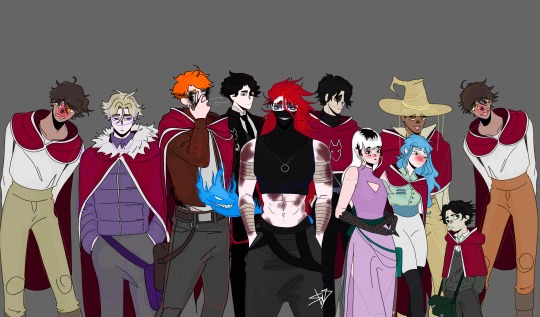
Sangria Coyote; Why the name "Sangria"? Besides being a cocktail and sounding goofy, in history or in other laguanges "sangria" means "bloodletting", "bloodshed", "bloodbath", etc... or well in latin means "sanguis" which is blood. So the name is basically "Blood Bath Coyote" or something like that, the association with blood just makes the squad look more lethal which goes along with Zura's quote for the Squad: "Doesn't matter how. We finish the mission." Why "Coyote"? This Squad is meant to be full of Wildcards. Besides normal squad mission (in and out of the Clover Kingdom), the members can be assigned or requested by other Captains to work with the squads frequently. If a member is always assigned to a squad, they can be promoted as an "official Wildcard". The Captain can be a "Grand Wilcard" too. So why "Coyotes" as the animal/symbol of the squad. Soen, which is Zura's spirit, is a canine. Coyotes are highly adaptable predators known for their intelligence and cooperative hunting strategies. Their adaptable nature and opportunistic behavior would likely be considered more of a wildcard nature which goes along with what Zura wanted for a squad. Their behavior is less predictable compared to wolves (which was the second option for the name). So yeah, a lethal coyote gang. Well now the members. The COYOTES.

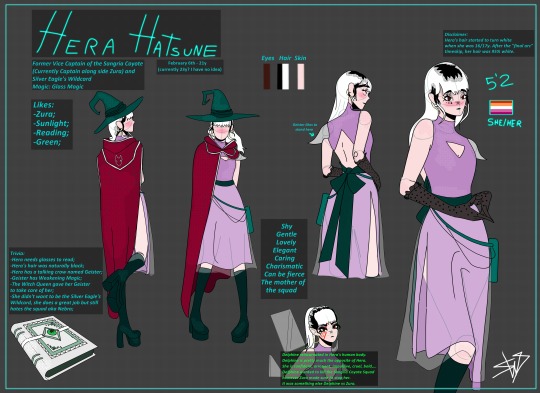
(Forgot to note that her heels add more to her height as it's obvious so if her height isn't consistent... yeah)
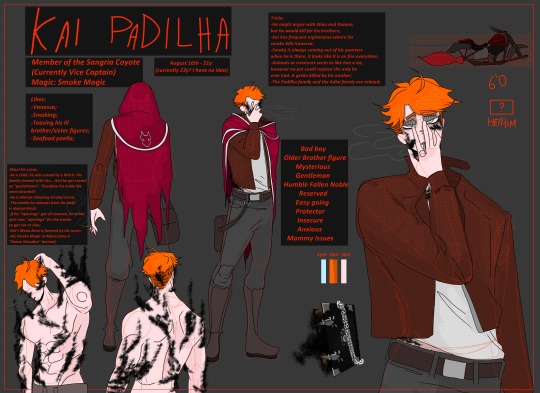


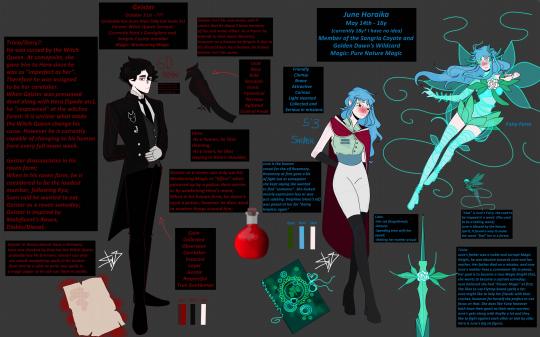
So I didn't draw Touya's cat (Gray) or June's cat (Gingerbread), but Gray has "Sleeping Magic" (doesn't talk like Geister) and Gingerbread is just a normal cat. Anyways, These are an updated version, so here's some notes: -Before Hera becoming a captain together with Zura, her cape had a "round back" like the one Kai's wearing on the sheet, since she was the vice captain. Of course after becoming a captain, she changed for the one with the same back as Zura and Kai changed for the Vice Captain cape. -The outside members (Shau and Linus) have a different rope and Damon has one for his size but it's still different from the regular members' ropes.
-Geister (human) didn't want a rope so he just has the symbol on his suit. -When I created the characters, I gave them mainly madeup or japanese surnames (and some first names too) however I did want to change that... but I also wanted to honour my 15y ass so I kept it... anyways Kai would be Spanish (as the surname can tell ofc); Hera doesn't really have a place where she could be from since she is from the Witches' Forest; Touya would be Finnish; The twins would be Mexican; Geister would be British; Linus would be Belgian; Shau and Damon would be Italian (no they are not related); June doesn't really have a place she would be from;
-Damon, Shau and Linus were recently added to the squad (2022-2023) -Some characters have a "?" on their sexuality, since they aren't straight but don't exactly have a clear definition like Ryu, Touya, Hera and Zura. In other words, it doesn't take a big part... However Shau and Linus are kind of a suspicious duo- -In a possible Timeskip, Damon is the captain of a new squad called "Raven Crows" (yes I wanted to play on words and it sounds like "Ravenclaw") and he is dating Marie; Geister would be now Damon's caretaker; Zura would still be around in Magic Knight stuff but Kai would be the Captain of the Sangria Coyote; Hera would still be around but not involved as much in Magic Knight stuff but I do see her being a teacher; Touya and the twins would still be Coyotes; Shau and Linus I see them living in other Kingdom having their own journey but they would visit Damon; June would have her own squad too and be the "Aloe Sylphs"; sorry for the long post
#black clover#black clover fanart#black clover art#fan art#oc#ocs#oc info#my ocs#black clover oc#oc art
11 notes
·
View notes
Text
Project Chimera: “Smilers”
In the year following the death of the fabulous four, Better Living devised several strategies for reclaiming land and otherwise tightening their control over the zones. Among these many nefarious initiatives, a particularly eccentric geneticist saw a unique opportunity to pitch their pet project as more than sheer experimentation, but something useful: Project Chimera.
Initially green lit by Better Living’s board as a propaganda tool, the idea was to create a creature that supported several of the city’s earlier campaigns that painted the zones as completely inhospitable. The geneticist responsible was given the resources to “make a monster”. Something that could pose as dangerous, if nothing else, and look good being dragged in, dead, from the zones. Naturally, the scientists on the project team decided to go above and beyond the call. They created a recombinant creature using a mixture of natural and synthetic breeding practices to generate a beast that didn’t just look dangerous for a photo op, but would pose actual threat to anyone who ran across them. Thus, the first “smilers” were given life.
Early smilers were large, roughly the size of big cats like tigers, and similarly built, with short faces and dexterous, heavy bodies. Hardy enough, their maker hoped, to endure the desert. The first generation were released into zone 05 in early 2020. Larger than any other (known) fauna living in the zones, these burly creatures caught many zone dwellers by surprise, and accounted for a sharp rise in unexplained mauling incidents and disappearances. They were also too large a predator to be sustained by the available resources of the desert, and after wreaking devastation to the native populations in the north, turned to hunting each other. Their numbers quickly dwindled. A second generation, smaller and faster, were introduced later in the year. These smilers were less individually impressive, but had been nudged toward more cooperative behaviors. They were pack hunters, and proved to be able to sustain themselves without burning through all the wildlife or turning on each other. And they still did plenty for the campaigns and even, to the BL/ind board’s delight, population control of the zones.
In a matter of months, mother nature took over. The second generation smilers, for all their ferocity, proved not only willing to tolerate the much smaller coyotes that already prowled the zones, but able to pack bond with them, and even produce offspring. The resulting hybrid creature is the most common type of ‘smiler’ seen in the desert now, some ten years since their initial introduction. Though the city long ago lost control of the project’s direction, Project Chimera is still considered a great success.
APPEARANCE & BEHAVIOR
Smilers today are largely canine in both form and nature since breeding across with the coyotes. At distance, they can be mistaken for large dogs, though drawing near will quickly uncover their more engineered features and greater size. They average heights comparable to the North American Cougar (or: they stand about to the elbow of a six foot tall person.) Their faces and general build are doglike, quadrupedal and built to run, with tall pointed ears which help them locate prey as well as regulated body temperature. Their more obvious recombinant features include some feline hallmarks, namely sheathed claws, long semi-prehensile tails, and a more dense, flexible musculature than canids of comparable size. Further notes on their physicality include:
Typically appear hairless, or mostly hairless with a short to medium length ruff at their head and shoulders, sometimes extending down the spine. Some smilers develop tufted ankles and tails. The 'hairless' portions are actually covered in a very short fuzz, so that the skin color shows through, but the skin is still somewhat protected.
Primarily nocturnal, though occasional evening or morning hunters. Their eyes are optimized for hunting in the dark, and more reflective than other species in the desert — a bright pair of dots in the night spells trouble long before they’re near.
Primarily pack hunters, though there are some who break this pattern. Smilers who seek out solitude are often larger than others, the more aggressive*
*of an already hyper-aggressive species. With origins as engineered beasts, they’re highly territorial and quick to attack most things that cross their paths — ‘solitary’ smilers have been known to pursue prey across multiple zones, whereas packs tend to stick more to their dens.
Indiscriminate hunters and scavengers, they won’t hesitate to dismantle whatever stumbles into their dens or falls for their traps. Different packs tend to have different preferred prey; rabbits for a small pack in eastern six, people for the pack of large smilers who live in the north, though the small pack wouldn't pass on a person and the big pack would happily snap up a rabbit.
Different packs tend to have preferred hunting styles
Solitary smilers are the most likely to stalk, kill, and eat other smilers (anyone observing and trying to research might note that these ‘solitary’ smilers tend to be larger and have shorter snouts and just might be a little tiny bit different from the common smiler, almost like they’re descendant from something like, say, a proto-generation thought to have died out)

Approximate size comparison of a common maned smiler to a six foot tall person. Please note this is an early visual concept that is in the process of being worked out, and will shift somewhat in the near future!
Highly intelligent for a canid mammal, smilers can and have been known to pursue prey for large distances, like a pack of wolves, but they generally prefer to employ complex hunting methods such as lures, group ambushes, and even simple traps. The most uncanny of these advanced hunting methods is the ability to reproduce human speech and vocalizations. It’s a limited ability, like one might expect of a parrot, consisting of short words and simple phrases. These seemed to be paired to associations — a certain amount of cognitive recognition, though not likely perfect comprehension. Best as anyone can tell, a smiler knows that making a sound that mimics the word “help” or the sound of a baby crying is likely to cause a human to approach and investigate, but doesn’t necessarily know what the definition or meaning of “help” is. This-to-that association, an echo of speech and nothing more. (..So far. Evidence also suggests they’re still evolving out…) This ability is also what gained them their name — when mimicking human speech, smilers pull their lips back into a jarring, tooth-baring "smile". The reason for this behavior is unclear, but it's thought it helps to project the sound more clearly.
Though it’s plainly obvious there is a pack nature at play, the specifics of the structure remain elusive, with no easily discernible pattern in regard to which smilers become pack leaders or why. Some groups allow in coyotes, and even feral dogs, while others are hostile to any and every other creature they come across. It seems safe to assume their intelligence level factors into things, somehow, it's just hard to say how. Current theory suggests that, like their preferred prey and hunting methods, different packs prefer different leaders, and there is no singular structure.
Smilers are primarily found in the outer zones, 04 05 and 06. As mentioned above, there are known packs to the east and to the north. They're less commonly found elsewhere, likely due to the smaller prey pools of the barren salt flats and arid south. It is currently unknown if the smilers are capable of traversing the continent outside of the relative safety of the zones.
#c:\\work>dir z:\ wld:bld* //.insp .stdy/#hi if this found its way to you this is purely for me n my friends headcanons and not an assertion of overall actual canon ty ♥
3 notes
·
View notes
Text
Deer
I have referenced deer in the post introducing this project and a general idea of the fungus, and today I get to tell you all about them. The deer, after the fungus infects them, change in a couple different ways. These changes were mostly caused by the fungus but also due to different factors such as changing hunting strategies from predators (see coyote and the hawk I’ll write about soon) to altered dietary capabilities.
Mutations
Deer are a very prevalent sight in my community, it’s always a nice time to see them (unless you’re alone at night). But the deer have changed due to this fungus. They’ve developed sharp canines and a digestive system with omnivorous capability. This is one of the first species which has a difference in mutations based on the sex (Bucks have antlers as normal and much longer canines as well as being roughly 4 inches taller on average than the doe’s. While the doe’s have gained, instead of antlers, a two spikes on their head).And have grown a thick membrane around their abdomen, which, like a camel’s hump, stores water. This water is then released as a mist through pores in their skin, creating a very thick fog when done in herds. They use this fog as a defense mechanism to obscure the area around them and escape using that opportunity.
Hunting
Deer have been one of the most famous prey in history though many stories of deer depict them as this unknown and surprising danger. Due to their mutations they have much more in depth hunting practices. When encountering a substantial threat, herds will release stored water and conjure a thick fog, then as they do the doe’s in the herd move to a safe distance while the bucks loosely encircle their prey on the edge of their views, appearing to be in much greater numbers than they truly are, disorienting and terrifying the threat at the center of this whisper rushing across the brush. Then they begin attacking each member of the threat one by one. They latch onto them with their holepuncher-like fangs and drag their target off into the fog. The deer group up with each other and tear the prey apart with gruesome and deep puncture wounds. This happens to each member of the threat until they are all in shreds. The doe rejoin the bucks and the whole herd enjoy their meal.
Some herds frequent the territory of the coyotes and run ins between the two are not an uncommon occurrence.
Materials
Because fog is produced by very clean water vapor, the deer’s skin is very effective in filtration. And any leather made from the skin is very breathable as well as durable, despite the often rotten patches that the mutated animals have. The membrane can also become a very effective and antibacterial storage place for water
Misc
(Tw death)
We went into the brush, I know it was stupid now, but I figured it’d at least be safer than the city. You know, less cars on the roads out there, less people, and I thought less of those beasts. We, my brother, a couple friends, and I, were all at my house when it hit, I’m still not really sure what happened. But we had seen apocalypse movies before, end of times and all that. We knew to do two things: board up the house, and prepare. After about a week, the bulk of the chaos began to die down. we got in the car and somehow found a street that was open enough to use. As we got over to the outskirts of the city we encountered some deer, or at least at the time that’s what I thought they were. They were about 50ft away and just staring us down like normal. A weirdly dense fog crept up as they were. Stressed as we all were, Dan, my brother, said to “just run past the creepy thing”, And so I tried. But as I got up to speed and drove on the left, they slammed into my car and flipped the whole thing on its top. We tried to get everyone out of the car, but Dan was completely missing. I still wish I reminded him to put his seatbelt on, or maybe I don’t. Maybe what came next was worse than a broken neck on rocks beside the road. The deer chased us down, through the brush and trees. I didn’t look back, but I heard the screams. First David, there was a wet crunch and then I head him drop with a pained yelp. Then Tim, he ran with me for a good bit, but the moment we stopped to rest, thinking maybe they just took David and we could at least escape, the deer’s angular jaw clamped down on his shoulder and hauled him away. I didn’t stop running after that, I only got away because of what I assume was a small fire that must’ve been set by some poor guy who they found next.
#writing#world building#worldbuilding#deer#gurps#ttrpg#ttrpg campaign#writing project#more coming soon#pseudoscience#fungi#mutations#mutation#animals#horror#short story#tw death
2 notes
·
View notes
Video
youtube
Unveiling the Ethiopian Wolf: Survival in the Highlands Witness the Secret Life of Africa's Rarest Canid! 🐺 Ethiopian Wolf: Comprehensive Overview 📌 Taxonomy & Conservation Status Scientific Name: Canis simensis Common Names: Ethiopian wolf, Simien fox, red jackal, horse jackal Conservation Status: Endangered (IUCN Red List) Estimated Population: Approximately 360–440 adults, with over half residing in the Bale Mountains 📏 Physical Characteristics Size: Comparable to a coyote; long, narrow skull; red and white fur Weight: Males average 14–19 kg; females average 11–14 kg Height: Approximately 60 cm at the shoulder Distinctive Features: Long legs, bushy tail, reddish coat with white markings 🌍 Habitat & Distribution Geographic Range: Endemic to the Ethiopian Highlands Preferred Habitat: Afroalpine grasslands and heathlands at elevations between 3,000–4,500 meters Habitat Characteristics: Open areas with short herbaceous vegetation, abundant in Afroalpine rodents 🍽️ Diet & Hunting Behavior Primary Diet: Specialized feeder on Afroalpine rodents, particularly the giant mole-rat Hunting Strategy: Solitary foraging; relies on acute hearing and swift pouncing to catch prey 🐾 Social Structure & Behavior Pack Composition: Family groups of up to 20 individuals; typically includes all males born into the pack and one or two females Territoriality: Packs defend territories averaging 6 km²; larger territories up to 13.4 km² in areas with scarce food Communication: Regular scent-marking and vocalizations; aggressive interactions with neighboring packs ❤️ Reproduction & Lifecycle Mating System: Monogamous; cooperative breeding observed Breeding Season: August to November Gestation Period: 60–62 days Litter Size: 2–6 pups Pup Development: Born toothless and blind; emerge from the den after three weeks; weaned by 10 weeks to six months Parental Care: Dominant female primarily breeds; subordinate females may assist in rearing pups ⏳ Lifespan In the Wild: Estimated 8–10 years; data limited due to the species' endangered status ⚠️ Threats & Conservation Efforts Major Threats: Habitat loss due to agriculture, disease transmission from domestic dogs (rabies, distemper), and hybridization Conservation Initiatives: Ethiopian Wolf Conservation Programme focuses on vaccination campaigns and community engagement 🌍 Explore the Wild Side of AI 🔮 👇 Dive into the full multiverse of WildAItopia 👇 📸 Instagram: https://www.instagram.com/wildaitopia/ 🎵 TikTok: https://www.tiktok.com/@wildaitopia 📝Blog: https://wildaitopia.blogspot.com/ 🌌Tumblr: https://www.tumblr.com/blog/wildaitopia 🐦X (Twitter): https://x.com/WildAItopia Rumble : https://rumble.com/register/WildAITopia/ Dailymotion: https://dailymotion.com/wildaitopia ✨ Art. Chaos. Code. Consciousness. Step into the glitch — where the future gets weird, and the wild gets digital. 👇 Like what you saw? Subscribe for more untold animal stories, wild truths, and cinematic encounters. 🌿 Turn on notifications – the jungle has more secrets to reveal. Ethiopian wolf, Canis simensis, endangered African species, rare wolves of Africa, Afroalpine predator, Ethiopian Highlands wildlife, Bale Mountains wolf, African canid species, wildlife conservation Ethiopia, rare carnivores of Africa, wildlife documentary Africa, highland ecosystems predators, endemic species Ethiopia, African wolf pack behavior, solitary hunter wolves, #EthiopianWolf #CanisSimensis #WildlifeConservation #EndangeredSpecies #WildlifePhotography #NatureLovers #WildlifeOfAfrica #AfroalpineEcosystem #BaleMountains #EthiopianHighlands
#youtube#EthiopianWolf CanisSimensis WildlifeConservation EndangeredSpecies WildlifePhotography NatureLovers WildlifeOfAfrica AfroalpineEcosystem Bal
0 notes
Video
youtube
📍 Carnivores: The Apex Predators of the Wild | Understanding Their Role in Hunting and Ecosystems
Carnivores are the ultimate hunters of the animal kingdom, equipped with sharp teeth and powerful instincts designed for cutting, shearing, and devouring meat. From the stealthy wolf to the cunning fox, these predators play a vital role in maintaining balanced ecosystems. But did you know that some carnivores, like the black bear, defy their classification by adopting omnivorous diets? Let’s dive into the fascinating world of carnivores, explore their unique adaptations, and uncover why understanding their behaviors is crucial for hunters and wildlife enthusiasts alike. Plus, we’ll show you how BC Firearms Academy can help you prepare for your CORE Hunting exam with free study materials and expert training.
📍 What You’ll Learn in This Video
0:00 - Introduction : Carnivores—meat-eating mammals with razor-sharp teeth.
0:03 - Examples of Carnivores : Wolves, coyotes, and foxes—the kings of the wild.
0:15 - Black Bears: A Unique Case : Omnivores classified as carnivores.
0:30 - Teeth Adaptations : Sharp teeth for meat and flat-topped teeth for plants.
0:45 - Importance for Hunters : Why understanding carnivores matters.
1:00 - Free Study Materials : Links to BC Firearms Academy’s CORE Hunting resources.
1:10 - Call to Action : Start your CORE Hunting education today!
📍 Examples of Carnivores
Carnivores are apex predators that dominate their environments. Some iconic examples include:
Wolves : Highly intelligent pack hunters known for their teamwork and strategy.
Coyotes : Adaptable and resourceful, thriving in diverse habitats.
Foxes : Clever and stealthy, with a keen sense of hearing and smell.
These animals rely on their sharp teeth and keen instincts to hunt prey, making them essential players in the food chain.
📍 Black Bears: A Unique Case
While black bears are classified as carnivores, they are actually omnivorous , meaning their diet consists of both meat and plants . Like humans, black bears have evolved to thrive on a varied diet:
Sharp teeth for cutting and consuming meat.
Flat-topped teeth for crushing vegetation, nuts, and berries.
This adaptability allows black bears to survive in a wide range of environments, from dense forests to open meadows.
📍 Teeth Adaptations
The teeth of carnivores and omnivores tell a story of their dietary habits:
Sharp teeth along the jawline are designed for cutting and shearing meat.
Flat-topped teeth are perfect for grinding and crushing plant material.
Understanding these adaptations helps hunters identify feeding patterns and anticipate animal movements in the wild.
📍 Importance for Hunters
Understanding the diets and behaviors of carnivores is essential for ethical hunting and wildlife management:
Recognizing feeding signs can help track animals and predict their movements.
Knowing which species are carnivores or omnivores ensures compliance with hunting regulations.
By studying these animals, hunters gain a deeper appreciation for the ecosystems they inhabit and the delicate balance they maintain.
📍 Free Study Materials from BC Firearms Academy
At BC Firearms Academy , we’re here to help you succeed on your CORE Hunting exam and become a confident, responsible hunter:
Free Online Study Materials : Prep for your exam with our comprehensive resources:
In-Person CORE Hunting Courses : Hands-on training to reinforce your knowledge.
CORE Hunting Exam Challenges : Test your skills and build confidence with practical exercises.
BC Hunting Exam Chapter Quizzes
Fun Hunting Quizzes for Core Hunter Education
Frequently Asked Questions and Study Guide
CORE Hunter Education Study Guide Course
Whether you’re new to hunting or brushing up on your knowledge, we’ve got the tools and resources you need to succeed.
👉 📍 Start Your CORE Hunting Education Today! Ready to take the next step toward becoming a responsible and ethical hunter? Visit us at www.bcfirearmsacademy.ca to access free study materials, sign up for courses, or book your assessments.
🎯 Tag a friend who loves hunting—it’s time to spread awareness about safe and responsible wildlife identification.
🔥 Subscribe to our channel for more tips, tutorials, and expert advice on hunting, firearms safety, and training. Together, let’s promote safe and responsible hunting practices—one step at a time. 🍁🔫
0 notes
Text
Two Unique Animals Michigan Hikers Might Encounter

Many outdoor enthusiasts flock to Michigan, home to countless hiking trails, preserves, parks, and campsites. However, residents and visitors must learn how to share hiking trails safely with the state's wildlife.
Several large mammal species, including cougars, also known as mountain lions, live in Michigan. These big cats were native to the region for hundreds of years before hunters and farmers hunted the local population to extinction at the start of the 20th century. The state has prohibited hunting cougars, and cougar sightings have increased considerably over the last 15 years, particularly around the Upper Peninsula. While cougar sightings by hikers remain rare, they will become increasingly frequent as deforestation and other human activities drive young males from their natural habitats in the American West.
As with most animals, predators and otherwise, cougars prefer to avoid human contact whenever possible. Hikers should always travel in groups and speak loudly, warning off any cougars in the area. If hikers encounter a mountain lion, they must remain calm and refrain from running away or turning their backs on the animal at any time. Hikers must make themselves appear as large and threatening as possible. Common strategies include raising arms overhead, wielding a stick or hiking pole, blasting air horns and other noise-making devices, and using bear spray. While it is important to stand tall, hikers should not provoke cougars needlessly. No research indicates that looking a cougar in the eyes will encourage or discourage an attack, but hikers should not charge at a cougar or force it into a location where its only option is to attack.
Other predatory animals that live in Michigan include wolves, bears, and coyotes. However, the moose is a far more threatening animal to hikers.
Like cougars, moose avoid humans when possible and usually ignore hikers otherwise. That said, hikers sometimes take unnecessary risks around moose because they are herbivorous animals. Moose are massive animals, standing nearly seven feet tall and weighing up to 1,600 pounds. Despite a seemingly gentle, perhaps slow-witted demeanor, moose can be temperamental animals, especially mothers with young calves and territorial males.
Moose interactions typically take place in the Marquette, Baraga, and Iron counties of the Upper Peninsula. However, a smaller population exists in the eastern Upper Peninsula, around Alger, Schoolcraft, Luce, and Chippewa counties. The Appalachian Mountain Club encourages humans to keep as much distance between themselves and moose. If a moose reacts in any way to a hiker's presence, even so much as a look or a snort, the hiker is too close.
An agitated moose may flatten its ears, raise the hair on its neck and hips, smack its lips, or show the whites of its eyes. Urination is another sign of anxiety. Moose may charge at a perceived threat without any indication. Instead of meeting an aggressive moose, hikers should run away from them. Moose will not back down after it has started to charge. On the contrary, moose will only stop once they have driven the threat far enough away. Hikers should place trees or boulders between themselves and the animal if possible.
Finally, hikers should know two key facts about moose attacks in the Northeast. First, a moose has never killed a human via an attack. However, multiple people in the region die each year as a result of automobile collisions with moose. With this in mind, hikers must remain vigilant on the trails and while traveling to and from a trailhead.
1 note
·
View note
Text
Top 45 Coyote Hunting // Tips and Strategies
youtube
MARCEDRIC KIRBY FOUNDER CEO. CFO.
MARCEDRIC.KIRBY INC.
WELCOME TO THE VALLEY OF THE VAMPIRES
0 notes
Text
Adaptation to Desert Life Apache Practices

Image generated by the author
Adaptation to Desert Life: The Resilient Spirit of the Apache
Introduction: Endurance in the Arid Expanse
Imagine standing in the heart of the Sonoran Desert, where the sun blazes down relentlessly, and the air shimmers with heat. In this stark expanse, survival seems an impossible feat, yet the Apache people have thrived for centuries. They are the masters of endurance, their existence a testament to resilience and adaptability in one of the harshest environments on Earth. As we explore their world, we uncover not just survival tactics, but profound lessons on community, respect for nature, and the wisdom of generations.
Apache Practices in Desert Adaptation
The Apache culture is a living encyclopedia of survival in the desert—an intricate tapestry woven from threads of ingenuity. Their mastery of tool-making and hunting techniques reveals an intimate understanding of the arid landscape. Picture the delicate hands of an Apache elder crafting a hunting spear from local materials, each curve and point honed by experience and knowledge passed down through the ages. They have learned when to gather, hunt, and, perhaps most crucially, where to find water.
One cannot overstate the significance of water in the desert. The Apache have developed sophisticated strategies to locate and conserve this precious resource. They dig shallow wells and create rock basins to capture rainwater, transforming scarce drops into life-sustaining reservoirs. This is not merely survival; it is a harmonious coexistence with nature, embodying a philosophy that every element of the environment has a purpose.
Storytelling's Role: A Cultural Lifeline
At the heart of Apache culture lies a vibrant tradition of storytelling. Elders gather the younger generations around flickering fires, their voices weaving tales that echo through time. These stories do more than entertain; they preserve cultural identity and impart wisdom, serving as a lifeline connecting the past to the present.
Consider the story of the trickster coyote, a common figure in Apache folklore. Through his misadventures, he teaches lessons about humility, resilience, and the importance of community. Each tale reinforces the values that bind the Apache people together, ensuring that the knowledge of survival and adaptation is not lost but rather celebrated and cherished.
Historical Context: Cultural Wisdom Through the Ages
For centuries, the Apache have navigated the challenges of desert life, developing a sustainable relationship with their land that is as intricate as the patterns in a woven basket. The Geronimo Apache and Mescalero Apache, for instance, practiced seasonal migration, a strategy that allowed them to follow animal migrations and harvest crops at their peak. Their extensive knowledge of local flora and fauna enabled them not only to survive but to flourish.
The Apache calendar was not merely a tool for tracking time; it was a guide to the rhythms of nature. The timing of gatherings, hunts, and ceremonies was meticulously aligned with the changing seasons. This historical wisdom, rooted in observation and experience, is a testament to their deep connection to the environment.
Community and Cooperation: The Heart of Survival
In the world of the Apache, survival is a collective endeavor. Community and cooperation lie at the core of their practices. Elders play a pivotal role in imparting knowledge about resource management and collaboration, ensuring that every member of the tribe is equipped to face challenges together.
When drought strikes, as it often does in the desert, the Apache respond with creativity and solidarity. They share resources, pooling their knowledge and skills to ensure that no one is left behind. This ethos of cooperation is a powerful reminder of the strength found in unity, a lesson that resonates far beyond the desert sands.
Cultural Significance of Apache Practices
Apache culture is a profound expression of respect for nature. Their survival strategies reveal an understanding of environmental dynamics that is both practical and spiritual. The Apache view the desert not as a barren wasteland but as a living entity, deserving of care and reverence.
Every part of the plants and animals they utilize is put to good use—food, tools, and shelter are crafted with patience and humility. This holistic approach to resource management showcases the Apache belief in the interconnectedness of all life forms. It challenges us to reconsider our own relationship with the natural world, urging us to adopt a more sustainable lifestyle.
An Apache Story: Sustainability in Action
The Apache’s ability to thrive in the desert is not merely a story of survival; it is a narrative of sustainability. They practice water conservation through innovative techniques, cultivate crops that thrive in arid conditions, and respect the natural migrations of animals. Seasonal gatherings, marked by celebration and storytelling, reinforce community bonds and reinforce the collective identity of the Apache people.
Elders like Biddy, who has spent a lifetime learning from the land, share invaluable lessons of adaptation with the youth. Through her stories, she instills a sense of identity and resilience, ensuring that the wisdom of the past continues to guide future generations.
Examples and Expert Insights: Lessons from the Land
Apache practices are rich with examples of sustainable foraging. The mesquite tree, with its sweet pods, provides nourishment, while the prickly pear cactus offers hydration in a parched landscape. These resources are not just food; they symbolize a deeper understanding of the land's gifts.
Moreover, Apache-developed water conservation strategies, such as rainwater collection systems, could serve as models for modern society. As we grapple with climate change and dwindling resources, these ancient techniques remind us of the importance of innovative resource management.
Practical Applications of Apache Wisdom in Modern Life
The wisdom of the Apache transcends their desert homeland; it offers practical applications for contemporary living. Simple practices like rainwater collection and foraging for native plants can enhance sustainability in our daily lives. Embracing community cooperation, seeking mentorship from elders, and sharing stories can enrich our cultural knowledge and empower us to confront modern challenges.
In an age dominated by technology and individualism, the Apache way of life reminds us of the value of connection—with each other and with the land. Their teachings encourage us to look beyond ourselves and consider the health of our communities and the environment.
Modern Relevance: A Call to Action
As we face pressing issues like climate change and resource scarcity, the Apache's adaptation practices become increasingly relevant. Their holistic approach to nature serves as a guiding light for modern sustainability efforts. By embracing their philosophies of community support and innovative resource management, we can enhance our resilience against environmental shifts.
In a world that often feels disconnected, the Apache's teachings beckon us to reconnect with nature and each other. They urge us to observe our surroundings, cultivate an appreciation for the interconnectedness of all life, and innovate ways to thrive amid challenges.
Conclusion: Resilience in Harsh Environments
As we step back from the vastness of the desert, we carry with us the enduring spirit of the Apache. Their practices reflect a rich tapestry of survival skills grounded in respect, resilience, and resourcefulness. The lessons drawn from their deep understanding of environmental connections foster strong community bonds and a culture that thrives under pressure.
Ultimately, the Apache remind us to ponder our relationship with the world around us. In their stories and practices, we find inspiration to cultivate a harmonious relationship with nature, ensuring a sustainable future for generations to come. What can we learn from their resilience to face our own challenges in an ever-changing world? The answers may lie in the stories we tell, the communities we build, and the respect we show for the earth that sustains us all.
As we walk away from the desert, let us carry the Apache spirit in our hearts, ever mindful of the delicate balance between survival and stewardship.
About Black Hawk Visions
Black Hawk Visions preserves and shares timeless Apache wisdom through digital media. Inspired by Tahoma Whispering Wind, we offer eBooks, online courses, and newsletters that blend traditional knowledge with modern learning. Explore nature connection, survival skills, and inner growth at Black Hawk Visions.
AI Disclosure: AI was used for content ideation, spelling and grammar checks, and some modification of this article.
About Black Hawk Visions: We preserve and share timeless Apache wisdom through digital media. Explore nature connection, survival skills, and inner growth at Black Hawk Visions.
0 notes
Text
@iamathornydeviltoo great question! There are a few reasons herd guard dogs are still able to do their jobs
for one thing, livestock guard dogs are also often BIG. I'm going to show you some examples from the upper end, not all herd guard dogs are this big but
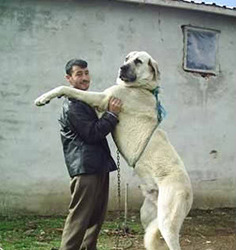

they are often very large doggoes and they get constant full meals so they are always in top shape, whereas wolves are not always as big as their genes allow due to deficiency in diet and just, the harsh conditions of living in the wild
so that helps. It's not all size tho, this dog below is still a great livestock dog

and that's because of the other things that go into making livestock guardian dogs successful
1: fences and barns.
If the pastures are fenced then the dogs will almost always detect the wolf/wolves (coyotes foxes cougars bears etc) while they are still trying to figure out how to get past the fence, and the fence is pretty much impossible to get by if the dogs are already there to prevent it.
If there is a barn or something, then as soon as the herd is aware of the wolf they run into the barn which derails the wolf's main hunting strategies of running to exhaustion, creating confusion on the move, and out-maneuvering prey while on the run
(the dogs help with alerting the herd to the presence of predators but the livestock is pretty good at noticing predators too, and sometimes shepherds and ranchers will keep a couple of other animals that are specifically better at this, mixing in a couple llamas or mules or something with their herd -- and a donkey or mule will absolutely fight and occasionally kill coyotes or even a single wolf)
2: maintaining a presence
A shepherd or rancher will never have just one livestock dog, you've usually got at least three depending on herd size. If you have 500 sheep you're probably going to have more like a dozen dogs. And the dogs aren't just a group of individuals, they have a system of working together as an anti-predator team.
Of course wolves often also travel in packs, but remember, the wolves are there to hunt, not to fight. Even if the wolves win the fight without injury (unlikely and a huge problem if any get too injured to hunt) winning the fight doesn't get them a meal and probably leaves them too tired to bag a sheep that night. So even just the possibility of a fight is a pretty big deterrent unless it's a fight they're guaranteed to win easily (like five wolves against one normal sized dog or something) and even then the noise will scatter the herd and make that hunt fail.
That's also why just having the dogs around peeing on things and leaving tufts of fur around and wafting their scent in the breeze can be enough to deter many predators
3: human partnership
The dogs aren't working the herd by themselves, they have their people. Even if (or actually, ESPECIALLY if) there are no fences or barns and the herd is out in what is essentially wild countryside, as soon as the guard dogs raise a serious alarm, the people are going to come running with weapons and fire or lights and it's going to turn into a whole thing. This is the opposite of successful conditions for a hunt and a real danger to the wolf's life.
Also, in circumstances like that with no fences out in the countryside, humans will sometimes augment their dogs with stuff like this
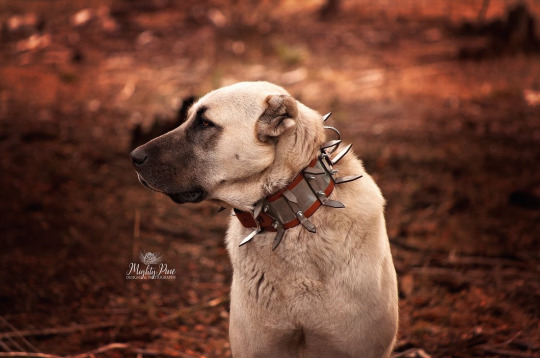
So, even though wolves can be way bigger than most people think (and i say CAN be, the wolf in the pictures at the top is one of the biggest subspecies of wolf and is in very good shape) livestock guardian dogs have an awful lot going for them, setting them up for success.
one last thing
because this addition is in danger of painting wolves as the enemy, i just want to highlight that wolves are in much more danger from us than we are for them. We have killed them down to zero numbers in a huge amount of their natural range, and ranchers in the US and Canada often forego livestock guard dogs and concentrate on just killing all the wolves they can. They continue to shoot and trap them despite studies sugesting that this makes wolf attacks on livestock INCREASE
See, guard dogs almost always deter instead of kill, but if you shoot and trap or poison wolves then it removes the most competent hunters from the pack which means the wolves that are left are more desperate for food and less able to get it and the young wolves left are raised without good training on hunting techniques, which increases the likelihood of the wolves going after non-wild animals they see as easier to hunt. Furthermore it can destabilize a pack that would have been happy to stay together as a large pack and scatters it. This means each member will try to start their own pack, and since a pack of any size will only let a one wolf of the pack have puppies, that means killing wolves can actually increase wolf numbers in a given area, with several wolves having puppies at the same time instead of just one.
And just to drive the point home about wolves being in danger from us, i'll tell you about the wolf that is actually in the picture up there. That's Romeo, a lone wolf that started hanging around the edge of a town in Alaska.
Romeo the Wolf
Towns in Alaska are just, out in the middle of endless wilderness, so a wolf on the edge of town was not unusual, but this wolf began to frequently visit the area just outside of town where the residents brought their dogs to play as a sort of dog park area. At first just watching the dogs, eventually the wolf slowly started making friendly advances and made friends with some of the dogs.
people did the responsible thing and tried to drive him off, not just because it can be dangerous to have a wolf around, but also for his own good - it's not good for the wolf if they lose a fear of humans.
but Romeo must have been lonely, because he kept returning to try to integrate himself into the group of dogs that came to the area to play.
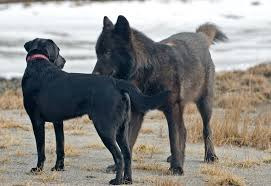

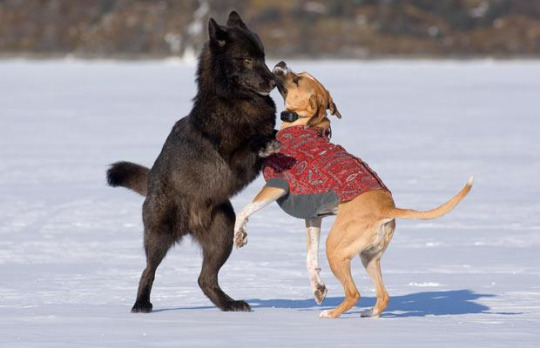
And he did make friends with them. And the people cautiously got used to him.
But he would have been better off not losing his caution of humans because eventually he was illegally shot by a pair of prize hunters and skinned for a trophy. They posted pictures bragging about it online, which is how they were caught and how we know Romeo's fate.
There's a book about him
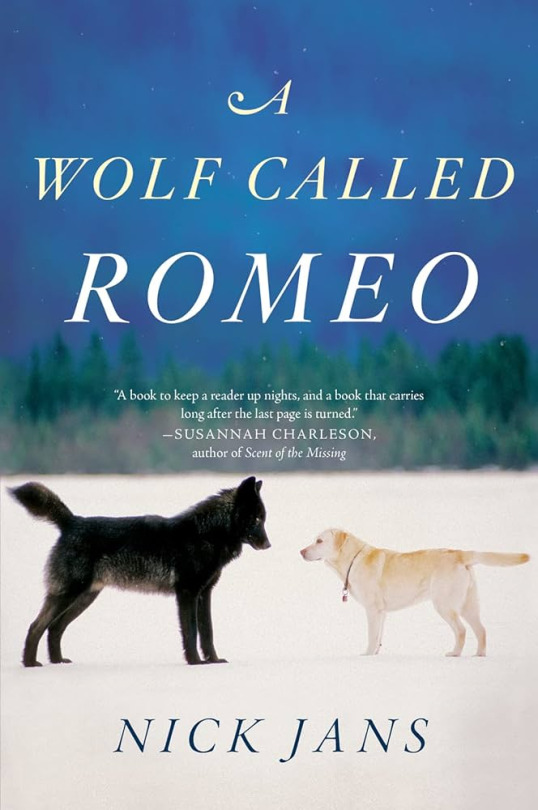
and here's an article about him if you're interested
hey, if you want to know how big a wolf can be compared to a dog, look at this



357 notes
·
View notes